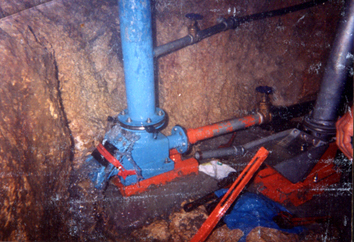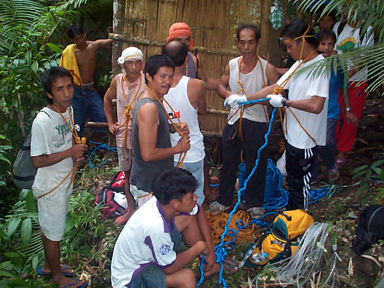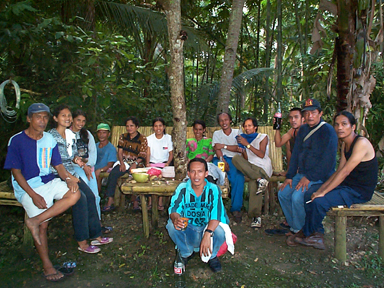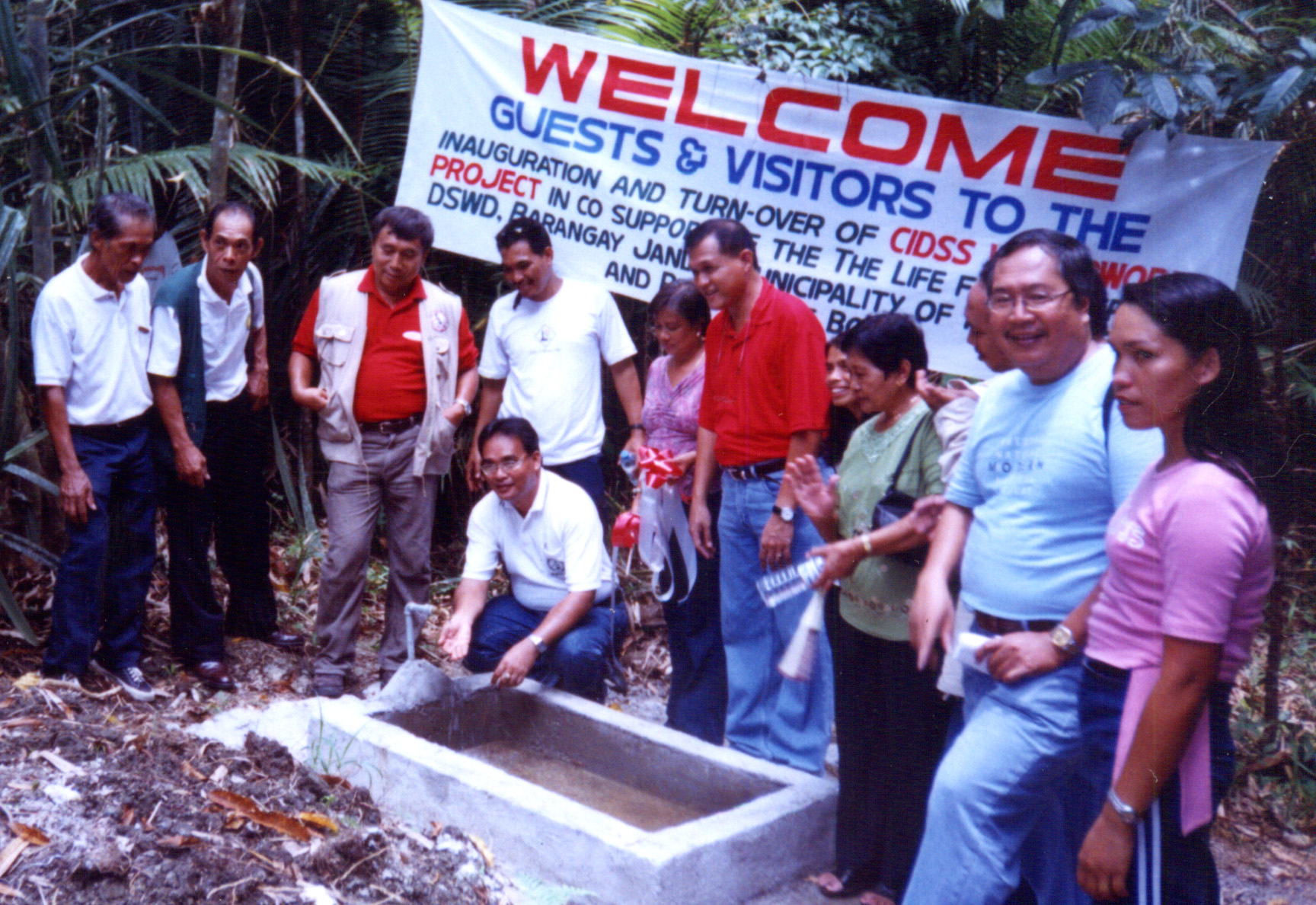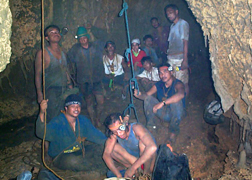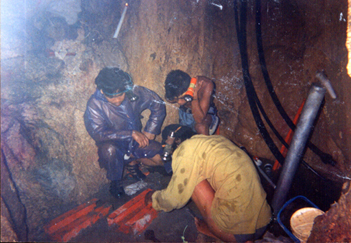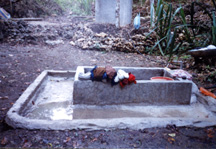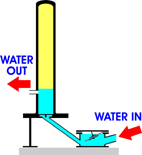Project Title: Jandig Cave Water Project
Project Site: Barangay Jandig, Municipality of Maribojoc, Province of Bohol
Beneficiaries: 300 farmers
Duration: March � July 2003
Project Cost: PhP 500,000.00
Funder: DSWD-CIDSS
Introduction
The Jandig Cave Level II Water Project was the first and historic project of Life 4 Water. Historic because the place has no easy access to safe drinking water for the past one hundred years. Most of the people rely mostly on rain water. Life 4 Water was able to lift the water using a hydraulic ram from inside a cave about 134 meters down under.
The construction was both risky and costly. Materials were very hard to transport because of the very difficult narrow passages inside. Once inside, L4W engineers and trained community associates stayed for at least three days to as long as 5 dyas to maximise work progress. What made the project even more difficult is that nobody believed that the water will rise from beneath the cave using this odd-looking ram pump.
The water finally came out in the time of the barangay�s centennial celebration. We later called the Centennial Water project of Jandig..
The community water representative were trained in water planning plumbing and management.
Brief Background
The Department of Social Welfare and Development Region VII through its "Comprehensive and Integrated Dellivery of Social Services (CIDSS) Program" granted PhP 500,000 (US$10,000) to Barangay Jandig of the Municipality of Maribojoc, Province of Bohol for the construction of a level II Water system.
Since its institution as a barangay in 1903, the upland portion of Barangay Jandig does not have a water system except of an only hand pump. The hand pump became useless, however, because the well had gone dry. Water is very scarce as there are no springs and creeks nearby.
The water in the cave was discovered by bird's nest hunters. This bird's nest are believed to be aphrodisiac and are sold in the market. In the course of their hunting they reached far bottom of the cave and discovered the flowing water. The local government bored hole hoping to "hit" the water but failed.
Life 4 Water engineers explored the cave and came up with a recommendation to use hydraulic ram pump because it is feasible. Using the funds from the CIDSS the constrcution project was started in April 2003 and finished it in July of the same year.
Using Hydraulic ram # 2, the water sytem delivers 1,200 gallons per day distributed in 3 different 4-cubic-meter reservoirs in a stretch of 900 meters. A back-up # 1-1/2 ram was also installed just in case the water draws down during long drought. |
